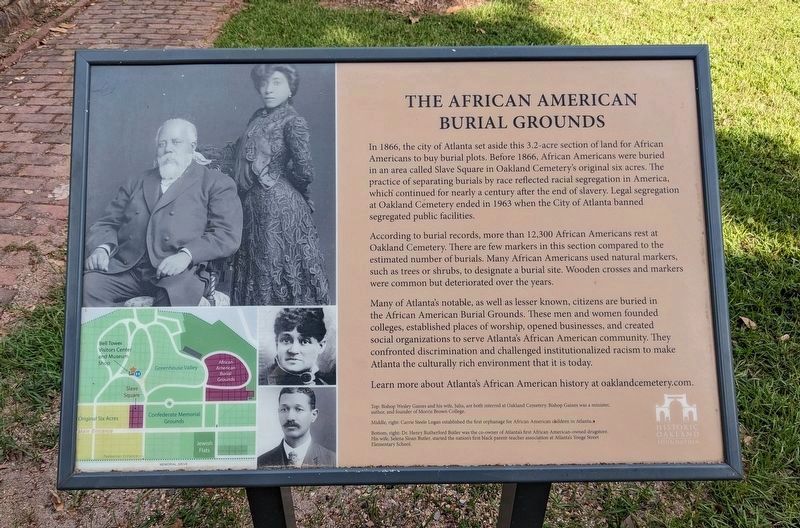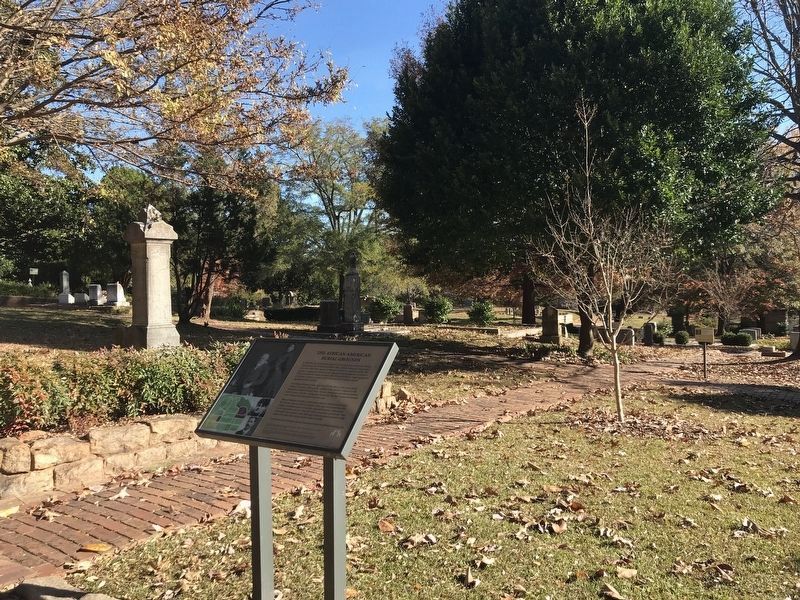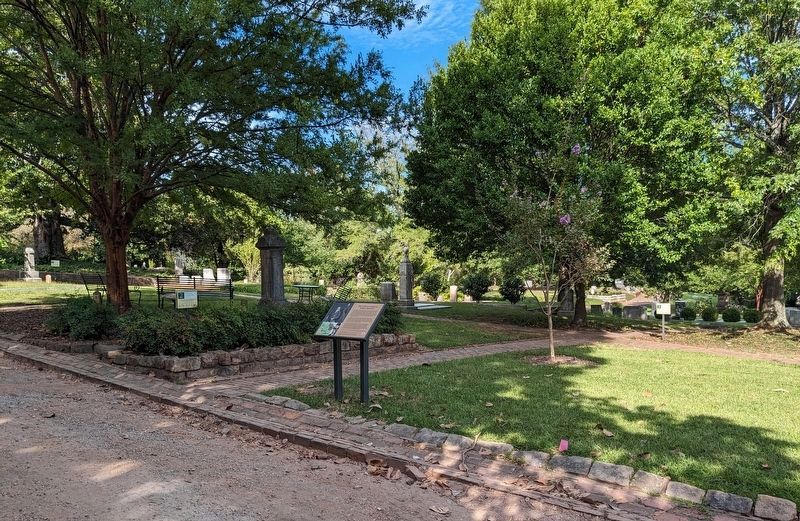Grant Park in Atlanta in Fulton County, Georgia — The American South (South Atlantic)
The African American Burial Grounds
According to burial records, more than 12,300 African Americans rest at Oakland Cemetery. There are few markers in this section compared to the estimated number of burials. Many African Americans used natural markers, such as trees or shrubs, to designate a burial site. Wooden crosses and markers were common but deteriorated over the years.
Many of Atlanta's notable, as well as lesser known, citizens are buried in the African American Burial Grounds. These men and women founded colleges, established places of worship, opened businesses, and created social organizations to serve Atlanta's African American community. They confronted discrimination and challenged institutionalized racism to make Atlanta the culturally rich environment that it is today.
Learn more about Atlanta's African American history at oaklandcemetery.com.
Captions:
Top: Bishop Wesley Gaines and his wife, Julia, are both interred at Oakland Cemetery. Bishop Gaines was a minister, author, and founder of Morris Brown College.
Middle, right: Carrie Steele Logan established the first orphanage for African American children in Atlanta.
Bottom, right: Dr. Henry Rutherford Butler was the co-owner of Atlanta's first African American-owned drugstore. His wife, Selena Sloan Butler, started the nation's first black parent-teacher association at Atlanta's Yonge Street Elementary School.
Erected by Historic Oakland Foundation.
Topics. This historical marker is listed in these topic lists: African Americans • Cemeteries & Burial Sites. A significant historical year for this entry is 1866.
Location. 33° 44.887′ N, 84° 22.269′ W. Marker is in Atlanta, Georgia, in Fulton County. It is in Grant Park. Marker can be reached from the intersection of Oakland Avenue SE and Martin Luther King, Jr. Drive SE. From the main entrance, take the 14th left. The marker is on the right just beyond the first intersection. Touch for map. Marker is at or near this postal address: 248 Oakland Ave SE, Atlanta GA 30312, United States of America. Touch for directions.
Other nearby markers. At least 8 other markers are within walking distance of this marker. The Geography of Race (within shouting distance of this marker); Women's Comfort Station (within shouting distance of this marker); Our Confederate Dead
(about 300 feet away, measured in a direct line); Confederate Obelisk (about 300 feet away); Clement Anselm Evans (about 300 feet away); Alfred Iverson, Jr. (about 400 feet away); Burial Ground of Congregation Ahavath Achim (about 400 feet away); John Brown Gordon (about 400 feet away). Touch for a list and map of all markers in Atlanta.
Also see . . .
1. African American Burial Grounds Project. Details about a $436,000 project to restore this section of the cemetery by repairing and/or stabilizing headstones, rebuilding and re-grouting retaining walls, and paving historic pathways to improve access. It also includes interpretive signage to further educate the public. (Submitted on November 23, 2021, by Duane and Tracy Marsteller of Murfreesboro, Tennessee.)
2. We Shall Overcome: African American Stories at Oakland Cemetery. The history of Slave Square and the African American Burial Grounds, and personal stories about ten people who are buried there. (Historic Oakland Foundation and the Emory Center for Digital Scholarship) (Submitted on November 23, 2021, by Duane and Tracy Marsteller of Murfreesboro, Tennessee.)
Credits. This page was last revised on February 18, 2024. It was originally submitted on November 23, 2021, by Duane and Tracy Marsteller of Murfreesboro, Tennessee. This page has been viewed 154 times since then and 25 times this year. Photos: 1. submitted on February 17, 2024. 2. submitted on November 23, 2021, by Duane and Tracy Marsteller of Murfreesboro, Tennessee. 3. submitted on February 17, 2024.


